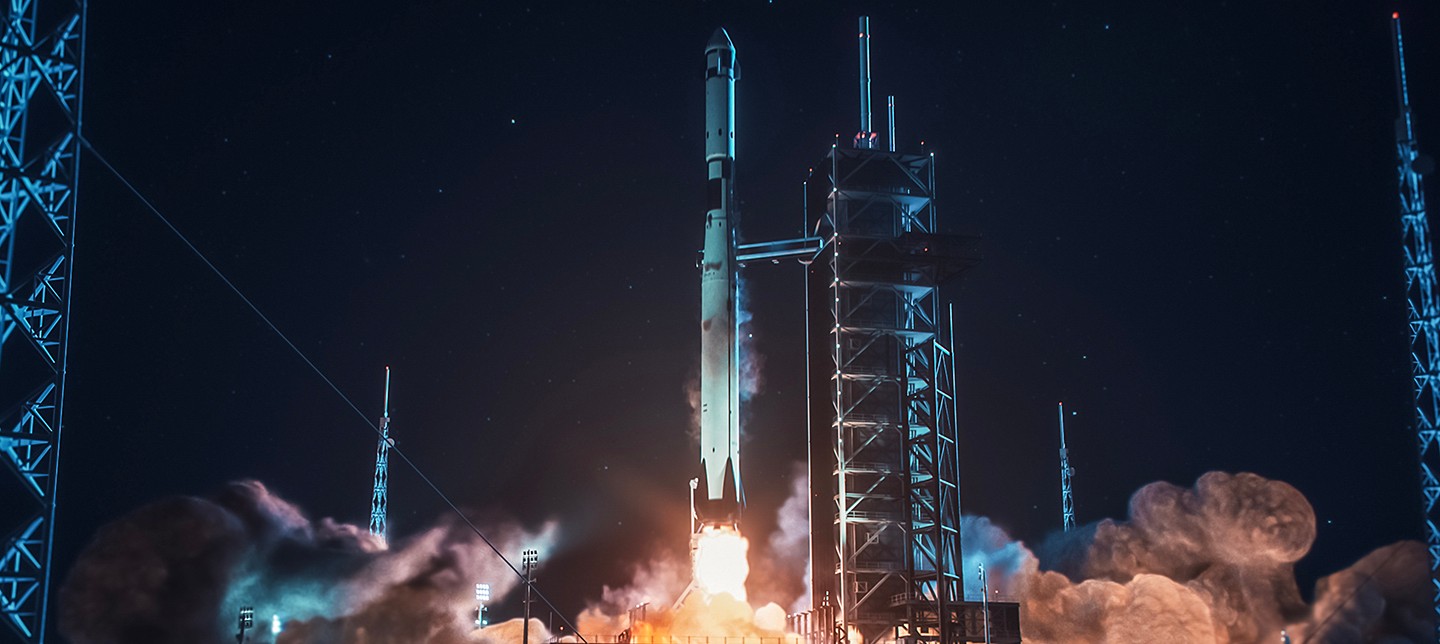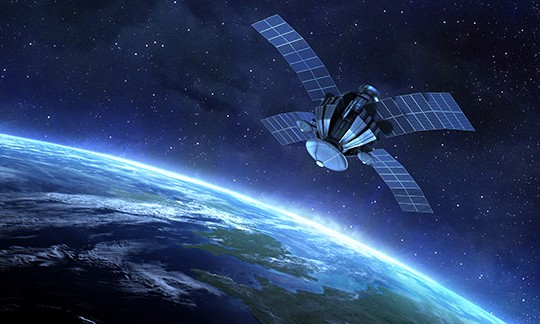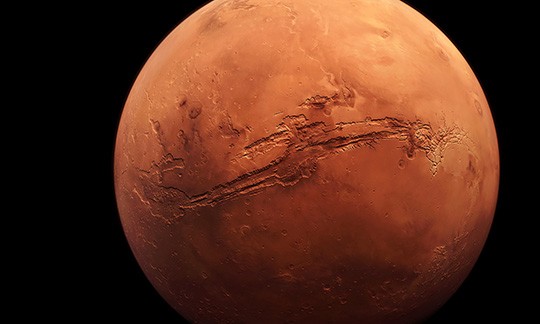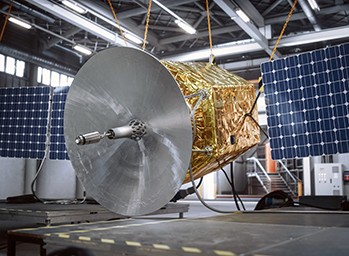
How to Build an Interstellar Ship
BUSINESS INSIGHT
SPACE LAUNCH AND EXPLORATION | 8 MINUTE READ
Traveling to nearby stars will require humans to overcome huge engineering challenges. Here’s a look at critical components of a real starship.
While humans have walked on the moon, dispatched rovers to Mars, and sent unmanned probes across the solar system, it’s travel between the stars that ignites imaginations and powers a significant amount of science fiction. Starships speed from one end of the galaxy to another, encountering aliens and exotic environments with all the ease of traveling across town.
Is this forever relegated to fiction? What kind of future space technology would it take to build a real starship capable of carrying humans out of the solar system? The bad news is there are serious science and engineering problems standing in our way. The good news is people are innovative and clever, with experts already working on overcoming some of those challenges. Here are important components we’d need to make interstellar travel a reality.
Exotic Propulsion Systems
The nearest star outside our solar system is Proxima Centauri at about 4.3 light years away (25,300,000,000,000 miles). It would thus take 4.3 years to reach our stellar neighbor traveling at the speed of light (186,000 miles per second). Our fastest spacecraft haven’t come anywhere near that speed, with the Parker Solar Probe holding the record at 394,736 miles per hour as of late 2023. A rough estimate shows it would take the probe around 7,300 years to reach Proxima Centauri.
In other words, we need to go faster—a lot faster—to make interstellar exploration feasible for humans. Traveling at the speed of light isn’t possible according to modern physics. Einstein’s Special Theory of Relativity holds that any object with mass would need infinite energy and infinite mass to reach that speed, an impossibility. However, traveling at even a percentage of light speed would open nearby worlds to one-way crewed missions. Astronauts hurtling through space at 10% the speed of light could reach Proxima Centauri in around 43 years. That’s not ideal, but it’s survivable.
Any interstellar ship’s propulsion system would need access to tremendous amounts of energy to shuttle people from star to star, and traditional solid or liquid rocket fuel will not offer nearly enough power for the trip. Instead, we must turn to some of the following experimental and speculative spacecraft propulsion:
- Nuclear Pulse Propulsion—According to the American Nuclear Society’s Nuclear Newswire, this method takes advantage of nuclear detonations to accelerate a spacecraft during its journey through deep space. One approach (Project Orion) proposes using exterior explosions, while two theoretical designs (Project Daedalus and Bussard Ramjet) incorporate them within rocket engines. Project Orion was considered by some to be feasible with current technology, while the other two approaches had substantial hurdles to overcome. Nuclear test ban treaties effectively made any nuclear detonation in space illegal, cutting off further development.
- Antimatter Engines—Collisions between matter and antimatter particles release their total mass as energy, meaning antimatter propulsion would be an efficient way to send spacecraft across the galaxy. The math adds up, but there are several challenges keeping us from the stars. First, we haven’t found any nearby sources of antimatter, though small amounts can be created in a lab. The second issue is storing it. Since matter and antimatter annihilate one another, a typical fuel tank is useless. Scientists have ways to contain it in mind, but the technology is not yet within our grasp.
- Light Sails—Adding sails to ships made it faster to travel across the oceans, and there’s reason to believe a futuristic take on this technology could do the same for space travel—though initially not with humans onboard. According to the Breakthrough Starshot project, shooting a high-energy light beamer at a sail attached to a small probe, or nanocraft, could accelerate it to speeds of up to 100 million miles per hour. An uncrewed trip to Alpha Centauri would take about 20 years. The planners behind the effort are upfront about the numerous engineering challenges facing them before the mission is practical, including the need for a miniscule probe and components.
- Warp Drives—Science fiction has gotten a lot of mileage from “warp drives,” exotic engines that bend space around a starship so it can travel vast distances without regard to lightspeed or breaking the laws of physics. Theoretical work resulted in the idea of the Alcubierre drive, which would contract and expand space. Unfortunately, no one is working on a practical warp drive today. Among the many obstacles would be the mass required to bend space in such a dramatic fashion. As noted by JSTOR Daily, the Earth’s gravity has a minimal warping effect, but not enough to meaningfully change the distances between our planet and other bodies in the solar system. The speculative technology is confined to science fiction stories pending a remarkable breakthrough in physics.
Life Support Systems
Today’s crewed spacecraft carry enough food and water onboard for the duration of a mission. The International Space Station (ISS) is regularly resupplied and uses technology to clean air and create potable water. How do you keep a spacecraft habitable for decades as a crew head toward another star? There are several ideas about life support for interstellar journeys:
- Recycling—There are already systems for removing carbon dioxide from the air, creating oxygen, and recycling water. Undoubtedly some of these systems could be used on an interstellar trip. However, they’d need to support a much larger crew who would also have to carry repair and replacement parts to keep them operational.
- Space Agriculture—Food can be freeze-dried for long-term storage, but the sheer amount necessary to feed a crew—along with natural spoilage over decades or centuries—means you can’t take it all with you. Farming may be a viable option, as seeds take up less space than packaged food and crops can be grown season after season. Plants also help remove carbon dioxide from the air and produce breathable oxygen. There are engineering and agricultural challenges for deep-space farming: You need somewhere to grow your food and enough water and nutrients to feed both plants and people during the mission.
- Cryogenics or Torpor—Science fiction movies have proposed deep-freezing human beings for centuries to limit their need for food, water, and oxygen, but the technology doesn’t yet exist. Another possibility is putting people into a state of torpor, similar to hibernation, that would lower their resource requirements. It’s an interesting idea but more research is needed before testing it on humans.
Structural Protection and Shielding
While it may look peaceful and serene, space is not a pleasant place for life. The lack of food and water is obvious, but there are lurking dangers like solar flares, cosmic radiation, meteoroids, and even space dust that could prove fatal to astronauts. A starship would need to protect people and electronic systems from destruction with approaches like the following examples:
- Radiation Shielding—The Earth is largely protected from solar radiation by our atmosphere, but an interstellar spacecraft and crew would be vulnerable to eruptions from our sun and even distant stars. Satellites use materials like aluminum to protect sensitive components from radiation. Designers of an interstellar craft would need to carefully consider radiation shielding that is effective and durable for an extended mission.
- Impact Shields—Collisions with meteoroids and debris is a concern for modern spacecraft, where even a pebble-sized object can do extensive damage at high speeds. This risk will be even more dangerous for a starship traveling at a significant percentage of light speed. Systems will need to be designed to prevent or mitigate impacts. NASA’s Astromaterials Research & Exploration Science division develops shields, which vary from simple (a thick portion of aluminum) to complex (Whipple Shields with multiple protective layers). Suitable protective concepts will need to be designed for interstellar ships.
Power Generation
Onboard computers and electronics will require a stable and reliable power supply over the course of the mission. There are several technologies that may play a part in providing electricity to interstellar craft:
- Nuclear Reactors—The Voyager 2 space probe uses radioisotope thermoelectric generators (RTGs), and some systems are still operational more than three decades after it launched. Interstellar spacecraft might use nuclear fusion or fission to generate onboard electricity. However, today’s nuclear reactors need to be refueled on much shorter timescales than a mission to a distant star would allow. In today’s nuclear plants, a third of the fuel bundles are replaced every 18-to-24 months, so this is a limitation that would need to be overcome.
- Solar Panels and Batteries—The usefulness of solar power becomes an issue when a journey takes you far from the sun. Future advancements may allow for more efficient panels and batteries to “recharge” spaceships as they travel through the darkness of interstellar space.
The technology, systems, and challenges discussed above make it clear that building an interstellar ship will be no small feat, and there’s even more to consider for the engineers of the future. Much as humanity’s journey to the moon required innovation and an incredible marshalling of resources, so too will traveling to nearby stars.
NI’s Role in Space Launch and Exploration
Our space test and measurement solutions support manufacturers from design through production.
Avionics, control systems, structure, telemetry, rocket engine test, and launch site operations and monitoring are some of the areas where NI’s hardware and software help in the test, manufacturing, and operation of launch vehicles.
Satellite test and integration includes avionics and electronics testing, HIL test, Flat-Sat test, datalink and telemetry validation, satellite link emulation, and vector signal transceiver (VST) radar target testing.
NI’s technology enables the successful launch and reliable operation of science missions for NASA and commercial and defense satellites. We don’t currently support “warp drive” testing, but we are ready to help engineers on the frontier of space technology.


